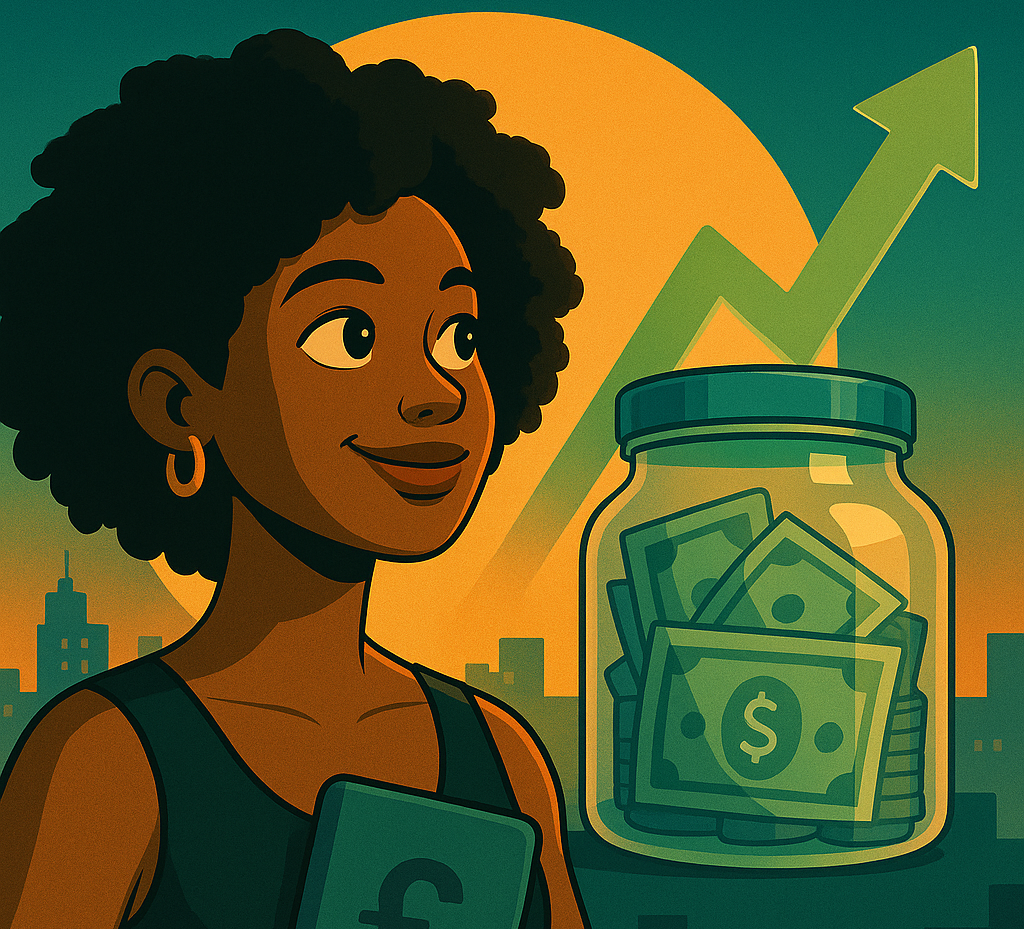Early access, limited discount, direct input into the app. Real perks. No nonsense.
Publish Date: August 6, 2025

Building an emergency fund is no longer just about money—it's a psychological shield against financial stress. Groundbreaking 2025 research shows:
Workers without savings spend 7.3 hours per week on money stress vs. 3.7 hours for those with £2,000 saved (Vanguard)
Savings boost retirement contributions by 2.2%—debunking the "savings vs. investing" myth (BlackRock)
33% of UK adults have more debt than savings, yet AI-powered tools help users save 30% more (Monzo/Revolut data)
A dedicated cash reserve designed to exploit mental accounting—training your brain to treat "emergency money" differently than everyday cash. It's not for holidays or planned expenses, but for:
Job loss (47% of UK workers feel at risk)
Medical emergencies (72% of Britons fear unexpected bills)
Urgent repairs (boiler breakdowns cost £1,500 on average)
💡 Behavioral Insight: Separate accounts reduce "cognitive drain" by 53% (Commonwealth Study)
|
Region |
Average Savings |
% with £0 Savings |
|---|---|---|
|
Wales |
£9,649 |
9.08% |
|
Northern Ireland |
£6,710 |
7.2% |
|
East England |
£11,200 |
4.1% |
Source: Bank of England 2024
Key Insight: Only 22% of UK adults have 6 months' expenses saved—yet fintech users save 30% more via automated tools.
Starter Goal: £500-£1,000 (covers 64% of minor crises)
Full Target: Use the 3-6-9 Rule:
3 months: Stable job + dual income (£6k for £2k/month expenses)
6 months: Self-employed/volatile industry (£12k)
9 months: High-risk (health issues/mortgage dependents)
Instant-access savings (not stocks!)
Fintech features: Round-ups (used by 12% of UK adults), gamified pots (Revolut/Monzo)
Pro Tip: High-yield accounts like Acorns' Mighty Oak (4.52% APY) combat inflation
77% of corporate programs use auto-enrollment (SECURE 2.0 Act)
Result: 47x higher participation vs. opt-in (Vanguard)
Action: Set standing orders for payday—even £20/week builds £1,040/year
Apps like Cleo analyze spending & "roast" waste (saves users £78/month)
UK success: 42% cut non-essentials to boost savings
Bonuses/tax refunds go straight to savings (exploits "found money" bias)
After using funds, restart automation within 3 days (prevents procrastination)
87% experience weekly financial stress (Gen Z: 62% regularly)
Savings = focus: Workers with funds are 4x less distracted (saving employers £250B/year)
💡 Integrated tactic: Combine savings apps with meditation tools (used by 55% of progressive companies)
Our behavior-powered platform tackles the real barriers:
|
Psychological Barrier |
GoSaveSum Solution |
|---|---|
|
Present bias (prioritizing today) |
AI nudges with loss-averse messaging: "Skipping £5 coffee = £150/month saved" |
|
Decision fatigue |
Auto-save rules: Round-ups, paycheck splits, spend thresholds |
|
Isolation |
Anonymous community challenges: Join #EmergencyFundClub (like #FinTok's 4.7B-view movement) |
|
Motivation drop |
Gamified progress bars (700% higher conversion vs. static trackers) |
Result: Users triple savings rates in 6 months (SaverLife case study).
Only if it covers 3-6 months of essentials. For £1,500/month expenses, £10k = 6.6 months—ideal. For £2,500/month, aim higher.
Instant-access, FSCS-protected accounts—not investments. Fintechs like Monzo/Revolut offer 4%+ APY pots.
Automate small amounts (AI tools find £50+/month in wasted spending) + use high-yield accounts beating inflation.
Build a starter emergency fund (£500-£1,000) first, then focus on high-interest debt, then complete your full emergency fund.
With automation and behavioral tools, most people build their starter fund in 3-6 months and full fund within 12-18 months.
Emergency funds are now predictors of life satisfaction (21% increase)—not just financial bandaids. To build yours:
Start with £500 via automation (77% success rate in workplaces)
Exploit mental accounting with separate pots
Use AI behavioral nudges (like GoSaveSum) to overcome procrastination
"Financial security isn't peace—it's the platform for bolder life choices."
Ready to join the revolution? Build Your Emergency Fund with GoSaveSum's AI